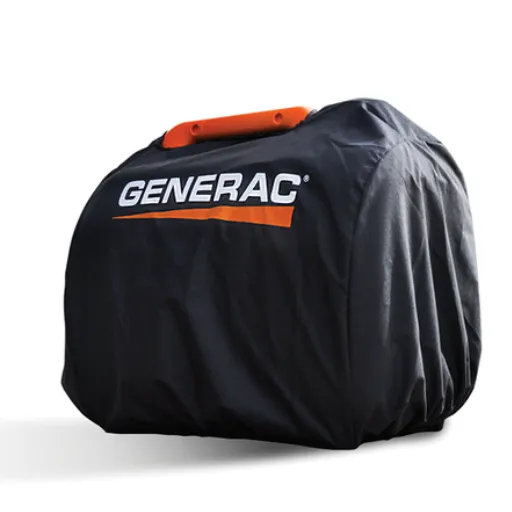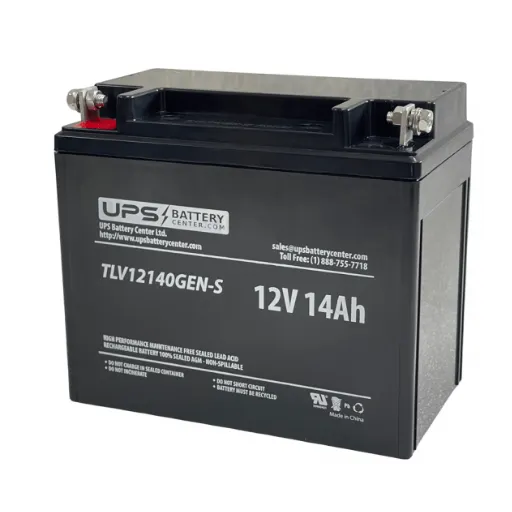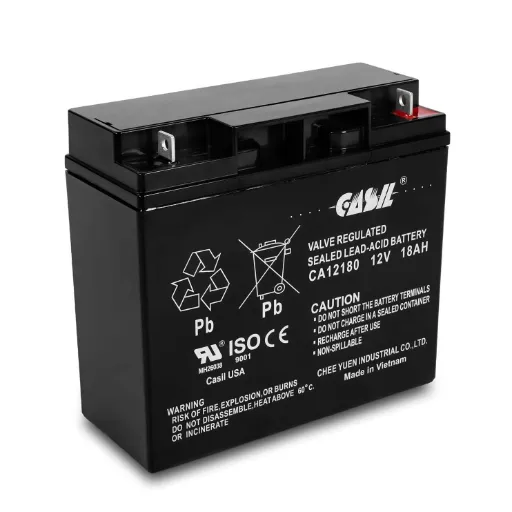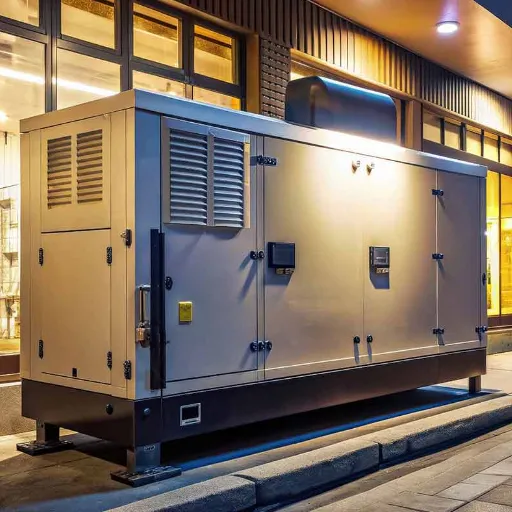Portable power generators have become an essential tool for a wide range of applications, from providing backup power during emergencies to enabling off-grid adventures and outdoor projects. This guide aims to deliver a comprehensive overview of the most effective and reliable options available on the market today, helping you make informed decisions based on your specific power needs. We will break down key factors such as generator capacity, fuel efficiency, noise levels, portability, and safety features, ensuring you have the technical insights required to select the best generator for your use case. Whether you’re preparing for a storm, powering tools on a remote site, or enhancing your camping experience, this article provides the expertise and guidance to choose the right portable power solution.
How do solar generators work for off-grid living?

Understanding solar input and charging capabilities
Generators are devices that transform one form of energy into electrical power. Solar generators specifically capitalize on electricity produced through photovoltaic (PV) panels mounted on or outside the generator’s casing using the energy from the sun. The generated electricity is kept in batteries, usually lithium-ion or lithium iron phosphate (LiFePO4), for future use. The efficiency of a solar generator is directly related to the amount of solar energy it can input and the quality of its charging system.
- Solar Panel Wattage: The majority of voltage solar panels are compatible with ranges between 50W to 300W or even above that. Higher wattage panels are capable of harnessing energy at a quicker rate, therefore lowering the solar generator’s possible charging time.
- Maximum Input Power: This is the maximum-rated wattage that the generator can receive from solar panels, often referred to as ‘PV Input’. To illustrate, a generator rated at 400W input is able to receive numerous panels and then be charged quicker.
- Battery Capacity: This is expressed in Wh and represents the total amount of energy the solar generator can utilize simultaneously. Maximum solar charger battery units of 1000Wh or 2000Wh are designed to enable maximum solar energy utilization and compliment extended off the grid living.
- Charge Controller Type: High quality solar generators utilize maximum power point tracking (MPPT) charge controllers, which are often 15-30% more effective in utilizing solar panels output than PMW controllers.
- Charging Time: The amount of time it takes to charge the battery under the conditions on hand for charging divided by the amount of sunlight and the size of the solar panel. The overall temperature is also an external factor.
Choosing a solar generator tailored to your needs guarantees maximum efficiency along with dependability for off grid use. It is important to evaluate these factors alongside your consumption patterns as well as the solar irradiance levels in your area.
Best solar panels for portable power stations
To choose the most suitable solar panels that can integrate with portable power stations, their efficiency in performance, power output, overall weight, and compatibility with existing generators need to be examined. According to my analysis, the best option is monocrystalline panels as they offer over twice the efficiency of polycrystalline panels at around 20-22% compared to at best 15-17%. For granular comparison, this is ideal as they would surpass the energy building efficiency of the other during times of dim sunlight.
- Power Output (Wattage): Ideal wattage panels corresponding to the power stations input specifications should be selected. For instance, if the energy input from the generator is within 100W, the optimum performing solar panel will lie within 80W – 100W range.
- Voltage Range and Connector Type: The active voltage of the panel, which is usually 12V or 24V, needs to be validated against the power stations charging system to make sure they are compatible. The connecting terminals need to be verified as well for seamless and error-free integration.
- Portability and Weight: The ideal portable panels will weigh close to 5-15lbs and possess the ability to fold or collapse for better transport. These lightweight panels are highly advantageous for use while camping or in remote locations.
- Durability and Build Quality: The panels which have weather resistance features, like an IP65 rating making the panels water and dust proof, would ensure dependable performance while aiding in reliable operation through different environmental conditions.
Taking into account these technical requirements in addition to your specific energy needs, you can choose solar photovoltaic panels that offer the utmost comfort and efficiency for your off-the-grid power requirements.
Maximizing solar power storage for extended use
To store solar energy for long periods, my attention would go towards optimizing components and following the proper technical procedures of best practices. For example, choosing a solar storage battery with adequate capacity would be crucial. I would opt for lithium-ion batteries because of their energy density, long life, and efficient charge and discharge cycles. For instance, a lithium battery with a depth of discharge (DoD) over 85% is usable without performance degradation.
In addition, an appropriately sized charge controller should be added to manage the electricity flow produced by the solar panels to the storage system. An MPPT controller would be the most effective as it has a 30% energy efficiency compared to older controllers like PWM mastering. Making sure the controller works with the solar panels’ voltage and current output must also be made.
Moreover, I would assess the system’s energy requirements to accurately define the capacity of the battery bank. Estimating daily energy use, allowing for a comfortable safety factor of 20%, and anticipated days of autonomy work to ensure optimal energy performance during energy shortage periods of sunlight. In the end, some other basic maintenance like removing dirt from solar panels and checking battery terminals enhances the efficiency of energy storage and prolongs its longevity.
What portable power station offers the most reliable solution for camping?

Comparing wattage outputs for outdoor appliances
The total watt requirement for powering outdoor equipment helps choose a particular portable power station. Smaller options like LED lights and smartphones need lower wattage, which normally ranges from 5 to 20 watts. In contrast, larger appliances like portable refrigerators or electric grills may require from 50 watts and can go to 300 watts or even higher depending on individual specifications.
- Battery Capacity: This is directly about the power available from the station and is expressed in watt-hours (Wh). For example, 500Wh can keep a load powered for 10 hours, provided the appliance is using 50Wh per hour (500Wh ÷ 50W = 10h).
- Output Ports: AC, DC, and USB ports if available and their respective maximum output ratings help determine what other appliances can be powered by the station.
- Continuous Vs. Surge Power: Continuous power is what the station can always provide in steady wattage while surge power is a short blip in available power, sometimes called spikes of energy, usually around appliance start up time.
- Recharge Time and Input Options: These determine how flexible the station will be when it comes to camping trips. A power station that allows multi-mode recharge, solar, wall and even car charging is far more flexible.
I pay attention to the details within these technical requirements and their corresponding appliance requirements so that I can guarantee the portable power station efficiently and dependably performs for any outdoor excursion.
Dual fuel options for versatile power on the go
The dual fuel degree of freedom is extremely beneficial in terms of flexibility and convenience, particularly during longer periods spent outside or in the case of an emergency. A dual fuel generator is flexible in adapted propane and gasoline fuel situation because it can utilize both. It can also be operated in a more cost effective manner depending on the price and supply of the fuel.
- Power Output: A dual fuel generator conservatively produces 3,000- 12,000 watts of power, but loses output efficiency when using propane instead of gasoline. That figure has to cater to the charging needs of my appliances or devices.
- Fuel Efficiency: Compared to gasoline, propane is cleaner, more efficient, and lasts longer. In the case of heavy power loads, gasoline takes the edge because it offers more energy output per gallon.
- Run Time: Look at the runtime of the generator on both fuel types. For example, a particular generator that I know will run for 10 hours at 50 percent load with a gasoline load, but only does 8 hours on propane ( due to propane’s lower energy density).
- Weight and Build: With dual fuel generators, their extra components, like regulators, result in greater weight thus having a negative impact of portability. To enhance usability, compactness is ideal for ease of mobility.
- Portability and Design: Ease of switching easily translates to improved effectiveness in use and functionality. Thus, about the switching mechanism, the less time consumed to switch fuel, the more efficient a generator is.
With these restrictions in mind, I am sure that any dual fuel generators purchased will be able to perform well and will be Ready for any outdoor or emergency power situation.
How to choose the right portable power generator for your needs?

Understanding power output and device compatibility
Before selecting a portable power generator, it is vital to estimate the power output against the appliances you intend to use. Generally, the power capability of the generator is given in watts (W), and it should be selected based on the total wattage of all the appliances that will be connected simultaneously.
- Determine Device Wattage: Examine the wattage specifications of each suggested device.
- Generator Power Output Ratings: Acquire a generator whose rated (continuous) power output is equal to or greater than the total running wattage of the appliances. Also, ensure the generator’s surge power output is greater than the highest starting wattage of any appliance connected to the generator.
- Voltage and Frequency: Make sure that the voltage and frequency the generator outputs are compatible with the requirement for the devices. For delicate electronics, check that the generator has an inverter or does not damage power by clean sine wave backup.
- Consider Power Reserve: To prevent straining the generator, consider a unit with power output which is 10–20% higher than your estimate.
When choosing a portable generator, balancing power requirements and using the technical specifications ensures compatibility. This guarantees that your devices are safe.
Assessing battery capacity and recharge times
To effectively assess storage batteries, first figure out the total energy needed for the intended purpose. The battery is measured in watt-hours (Wh), which indicates the amount of energy a battery possesses. As an example, a battery with 500Wh can power electricity at 500 watts for one hour. To make sure the battery’s capacity is enough for your requirements, calculate the total energy consumption of your devices.
- Battery Capacity (Wh): Identify the amount of time the connected devices can run for. Verify that the capacity supports your usage needs.
- Input Power (W): Describes the maximum power the battery receives from a charging unity. Check whether the charging equipment meets the needs.
- Charge Time (hours): An estimation in reality is battery power divided by the power from the charger; variations are often caused due to efficiency reductions and external factors.
- Cycle Life: tells you how many charge/discharge cycles the battery will work through before losing significant amounts of the total range, which is more useful over longer periods.
By adjusting factors, it is now possible to choose a battery solution that meets your energy needs and optimizes recharge as well.
What are the most cost-effective portable power solutions?

Analyzing long-term savings with solar generators
Solar-powered generators are a portable power source, and they are cost-effective after considering the long-term operational costs.
- No or Minimal Direct Costs: Solar generators utilize solar energy, which is renewable and free. Unlike fuel alternatives, ongoing expenses such as gas expenditures or propane usage are not a concern.
- Conversion Efficiency: High-quality solar panels and lithium-ion battery systems work hand in hand, as a combination result in 20-23% conversion efficiency rate. This ensures maximum utilization of solar energy through optimum efficiency.
- Long Term: Many solar generator systems have a battery cycle life of 2,000+ cycles. On the average with consistent usage they can last above the 5-7 year mark before their usable capacity declines significantly. With these solar generators, maintenance and replacement costsare lower.
- Flexibility: Performance may be customized without the need to invest in different systems by adding additional panels and batteries. This feature assists in system expansion.
Because of such generators, users who frequently require off-the-grid power solutions are able to enjoy long term usage at a lowered cost while simultaneously having their fuel expenses eliminated, efficiency components leveraged, and durable technologies utilized.
Budget-friendly portable power stations for occasional use
Affordable portable power stations meant for light-duty tasks must be chosen with a value-for-money approach in mind. For light or infrequent uses like mingling outdoors, lantern use, or as a backup source of power during an emergency, compact systems are usually adequate.
- Battery Capacity: A suggested option is within the 150Wh to 500Wh range, as it ensures adequate charging for smaller gadgets such as mobile phones (10 to 20 averages per usage), supporting their use for 5 to 10 hours.
- Output Ports: Power stations with various options like USB-A, USB-C, twelve volts carports, and at least one electric interface supporting either 12 volts or 150-300 watts would be ideal.
- Weight and Portability: Devices below 10 to 15 pounds are ideal in terms of logistics and support irregular usage outside.
- Recharge Speed: Systems supporting solar panel recharging (50- 100W) would be ideal as they ensure full recharge times within 6-8 hours when under optimal sunlight conditions. A few models also support quick wall outlet charging within 3-5 hours.
- A Lifecycle and Durability: While budget models provide over 500-1000 cycles, which is reasonable for casual heft over the years, high-end models also boast above 2000+ life cycles.
You can determine power stations optimally balances cost and basic requirements that would be ideal for infrequent use by keeping these pointers in consideration.
Balancing price and performance in power products
My approach to balancing price and performance in power products focuses on how the product’s specifications are aligned with my usage needs. For example:
- Power Capacity: I estimate how much power my devices would consume. For light use, a system with 300-500Wh is more than enough, but 1,000Wh models are more appropriate for higher-energy users. This way, I avoid paying for more power than I require.
- Weight and Portability: For most of my activities like traveling or engaging in sports, units below 15lbs are more desirable. Other models are easier to transport, but their extra weight comes from being more fully featured which makes them more transport awkward.
- Recharge Speed: In terms of efficiency, I actively look for systems with solar recharging options (50- 100W) that allow full recharge in 6-8 hours of direct sunlight. My wall charger preference is 3-5 hours when time matters. Those numbers guarantee I am prepped with minimal downtime.
- Lifecycle and Durability: I tend to use high-end systems often; 2,000+ charge cycles make for overkill. Occasional users do fine with budget systems capped around 500-1,000 cycles without massive overinvestment.
Thinking about the purchase with those benchmarks makes sure I get the necessary functionality while saving money, especially when considering costs of durability and real-world recharging.
How do you maintain and troubleshoot your portable power generator?

Proper storage and maintenance for longevity
Effective storage and maintenance of a portable power generator are essential elements that determine its longevity and reliability.
- Storage Conditions: Regarding the location of the generator, I store it in a dry and cooler place free of both sunlight and extreme temperatures, where the ideal temperature oscillates between 50 and 86 degrees Fahrenheit. These measures allow me to prevent battery degradation resulting from exposure to either heat or cold, thus allowing the generator to sustain its efficiency and overall life cycle.
- Battery Maintenance: To keep the generator fully operational, I make it a point to recharge it at minimum once every three months, even if it is not in use. These steps help to prevent deep discharge states that pose a significant risk to the generator’s longevity. For instance, Lithium-ion batteries lose capacity when they remain uncharged for a long time. Thus, an extended period without being placed on recharge results in the battery losing its capacity.
- Ventilation: As for preventing overheating, I have my methods of ensuring proper ventilation. I ensure that there is unobstructed airflow during charging or usage of the device. Buildup of excessive heat can result in internal components suffering damage alongside a reduction in overall functionality. Instructions set by the manufacturer often dictate that the device needs to be kept free of obstruction on all sides by a minimum of four inches.
- Cleaning the Unit: Over time, dirt and dust can build up on ports or vents. Regularly cleaning these places with a dry cloth does the job of unclogging them without risking short circuits and ensuring connections remain functional.
- Regular Testing: Reliability is strengthened as a result of frequent checks. For me, this translates to running the device at a moderate load, meaning I will turn on a small appliance for somewhere between 10 to 15 minutes. Insufficient checking can result in problems going unnoticed until they are critical.
In these ways, I manage to optimally protect and maintain my generator, so that it roofed and ready to work when called upon, while following the manufacturer measures and technical specifications of the device.
When to seek professional help or contact the dealer
Getting guidance from a professional or dealer should be sought in the cases listed below:
- Error Codes and Indicator Lights: Borders crossed by a generator, such as showing changes in error codes or warning indicator lights still lit, require supplements and special advice.
- Unwanted or Atypical Noises or Vibration: Changes in the normal operating sound of the machine or equipment and the vibration level increases more than expected could mean that the equipment may have some problems like damaged bearings or there is some additional misalignment such as misalignment of the rotor. Working under these conditions could cause damage.
- Insufficient Ventilation Causing Overheating: If there is evidence that the device has been overheating despite attempts for cooling down, like having four-inch gaps on every side of the device, there could be other problems. Specialists of the device would like to look at the cooling fan and heat sensors or some pieces within the device.
- Sustained Irregularities In Voltage or Frequency: When the power output seems inconsistent or there seems to be some trouble escalating the output power like the expected load causing power of above 5 percent or voltage instability within the region of 100 milliowatt hours further attention still causes possible damage in those the power supply could be to.
- Inability To Successfully Conduct Load Testing: Inability to conduct a monthly sustained load testing means that the generator might not be able to maintain some level, which is what 1000W is or can carry with it, as a primary sign for attention.
- Tripped Breakers or Burnt Smell: Any electrical burning smell such as tripped breakers alongside noticeable damage to wiring and components call for absolute cessation of use and immediate attention of a qualified technician.
Following these instructions, complications can be dealt with effectively with the least amount of chance for further damage, all to ensure the generator is safe and efficient for use far into the future.
Reference sources
Frequently Asked Questions (FAQs)
Q: What are the advantages of using Anker portable power stations?
A: Anker portable power stations are popular for their compact design, versatility, and user-friendly features. They’re ideal for powering smaller devices like laptops, smartphones, and light bulbs during outdoor activities or minor power outages. Anker products often come with multiple output ports, solar charging capabilities, and intuitive displays, making them a convenient choice for those seeking portable power solutions.
Q: What advancements in portable power generator technology can we expect?
A: We can anticipate significant advancements in portable power generator technology. This may include improved battery efficiency, increased power output in smaller form factors, enhanced solar charging capabilities, and more intelligent power management systems. We might also see better integration with smart home systems and more sustainable, eco-friendly power generation methods to keep it going in an environmentally responsible manner.
Q: How can I choose the most reliable power solution for my specific needs?
A: To choose the most reliable power solution, consider factors such as your power requirements, frequency of use, and intended applications. For home backup, assess the wattage needed to run essential appliances. For recreational use, consider portability and battery life. Look for features like X-Boost technology for handling high-wattage devices, multiple charging options, and expandability.
Q: What is a battery backup system, and how does it differ from a traditional generator?
A: A battery backup system, like a home battery, stores electrical energy for use during power outages. Unlike traditional generators that run on fuel, battery backups are silent, emit no fumes, and can be used indoors. They often integrate with solar panels for clean energy recharging. While they may have lower overall capacity compared to fuel generators, they offer instant power transfer and are more suitable for frequent, short-term outages and daily energy management in residential settings.
Q: How do I maintain my portable power generator to ensure longevity and optimal performance?
A: To maintain your portable power generator, regularly check and clean its components, store it in a cool, dry place, and follow the manufacturer’s manual for specific care instructions. For fuel-based generators, use fresh fuel and run the generator periodically. For battery-based systems, ensure proper charging cycles and avoid extreme temperatures. Regularly update firmware and inspect cables and connections. Proper maintenance will keep your generator reliable and ready when you need it most.








